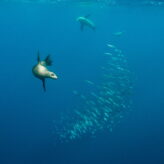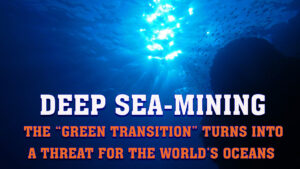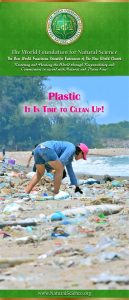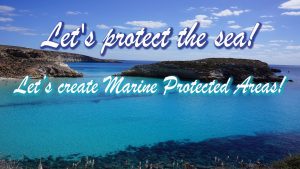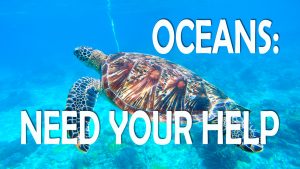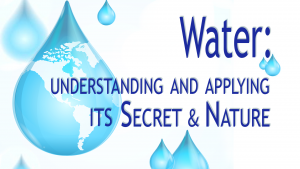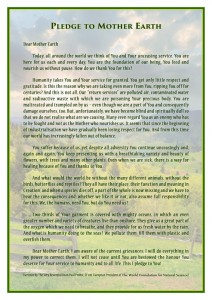The seas and oceans connect all life on the planet. They account for more than seven tenths of the Earth’s surface, that’s 361 million square kilometers. They form a unique ecosystem and are home to countless animal and plant species: 80% of the Earth’s creatures live in the sea. The worldwide climatic balance is determined significantly by the oceans, because they fulfil an important task for the global material cycles such as the carbon cycle and the nitrogen cycle. The sea is the biggest converter of CO2, of which the algae produce two thirds of the Earth’s oxygen. You could certainly argue that two out of three breaths you take originate from the sea! And for more than a billion people marine creatures are the only source of protein.
In addition, the seas are the reservoir in which fresh water is continually purified by the salt and again brought into circulation. Only 2.6% of the global water supplies are available to human beings in the form of consumable fresh water.
The existence of the seas, the largest habitat on our planet, is threatened in many ways by the actions of humans. Massive pollution, extreme overfishing, thoughtless fishing methods, whaling and dolphin hunting, which today are still systematically practiced by several nations, are bringing thousands of threatened species to the brink of extinction. Specifically protecting the oceans and their inhabitants is therefore one of our most important concerns.
Practical tips for reducing the contamination of the oceans:
- Every day be thankful for the water you have at your disposal.
- Use environmentally safe washing and cleaning detergents for your laundry, dishes and for cleaning.
- Choose foods from natural production in your locality, because the harmful substances used in conventional agriculture contaminate the waters and, in the end, the sea… more
Focus on Oceans
Life in the oceans presents itself to us in immense diversity and breathtaking beauty. This vast, life-giving, self-sustaining and self-renewing habitat has always drawn us human beings into its powerful spell and fills us with wonder. With admiration, we recognise that we are part of something far greater that forms the basis of our existence. […] Read on...
Publications
Film
Seas and oceans define this planet Earth in a unique way. They make it a blue planet and establish a connection between all the continents. The sea gives life. It is the biggest converter of carbon dioxide and is crucial for the entire water cycle, it is habitat for uncountable numbers of animal and plant species and its fish are the basis of life for more than a billion people.
Film
No other place in Europe produces more plastic than Germany. But it is not so difficult to escape the packaging madness. Find out how plastic affects the environment and our health and what you can do to stop the flood of plastic. Because “nobody has to buy plastic, you just have to know the alternatives – and that is not as complicated as many think.”
Brochure
8.3 billion tons—that is how much plastic has been produced worldwide since 1950, half of it in the last 13 years alone. But of all this plastic, only about 30 % is still in use, while the rest has been disposed of. For although 99 % of plastics are produced from the valuable and non-renewable resources of oil, natural gas and coal, plastic has become a cheap disposable product. 95 % of plastic packaging is used only once, after only one month half of the plastic has become waste. Of the approximately 6.3 billion tons of plastic discarded so far, only 9 % has been recycled (mostly downcycling to lower quality products), and 12 % has been incinerated, but 79 % has ended up in landfills or in the environment.
Film
The seas and oceans connect all life on this planet. Therefore, let’s make a joint effort, so that future generations may also feed on the bounty of the sea and enjoy its beauty!
Film
The oceans are the greatest water reservoir of the Earth and the fish of the oceans are the main source of nourishment for one billion people. However, the oceans today are far from being intact and clean. They and all the life within them are in great distress. On a daily basis we are poisoning this unique world more and more with stuff from our everyday lives that we no longer want, use excessively or use without thinking about the consequences. Are we even aware of this? We need the oceans and the oceans need us!
Film
Water has so many different abilities and properties unlike any other element. It transports, conducts, cools, warms, cleans, informs, nourishes, absorbs, heals and quenches the thirst. Water is the basis of our lives and we are destroying it. When water is polluted and full of garbage, then the planet is ill and so are we.











